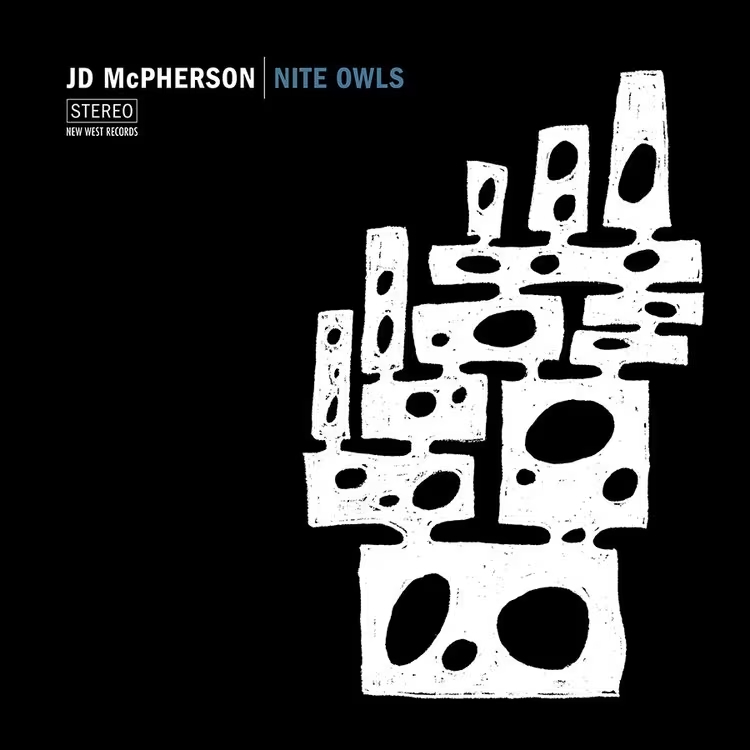‘Nite Owls’ by JD McPherson Review: Refreshed Retro Sounds

The singer-songwriter draws on the rock music of the 1970s on his new album while retaining a blues-country tinge.
By Barry Mazor
There’s a problem commonly faced by performers who have dedicated themselves to reviving some retro, once-popular style and found acceptance in the practice: keeping that act fresh over time. Sooner or later, scratching that same niche becomes all-too predictable, a tiresome take on the oldies, itself getting old.
Oklahoman JD McPherson arrived as a national recording artist in 2010 with his album “Signs and Signifiers,” wielding smart and danceable, updated roots-rock that sprang from R&B and the rockabilly of 60 years before. The semiotic title was an early warning of how conscious he was of what he was summoning up—and how. He fused his forceful, declarative blues-shouter vocals, remindful of the most raucous, aggressive 1940s and early ’50s R&B, with maximally twangy, country-inflected reverberating guitar. That amalgam distinguished him from by-the-numbers, throwback rockabilly acts, and he and his crack band became a live sensation.
He has since proved creative and knowing enough to avoid letting that successful brew grow stale—by engaging the sounds of later takes on that postwar era’s material: ’60s British Invasion, for example. “Nite Owls” (New West Records, out now), his first new album in six years, steps forward again, updating the rock-revival sounds of new wave, punk and glam rock as a sharp scholar might. He wasn’t at work back in the ’70s; he was born in 1977.
Mr. McPherson recorded this new album not in Los Angeles, as had been typical for him, but where that first breakthrough LP was made, in Chicago. He still emphasizes his uber-reverby electric-guitar riffs and single-note leads, and even dedicates this set to twang guitar king Duane Eddy, in case anyone could miss the sonic reference. The band lineup is new, though, and different. Thanks to Alex Hall, Chad Copelin and Douglas Corcoran, there are three prominent keyboardists on piano, organ, Farfisa electronic organ and synthesizers. And while people may well be moved to dance, it would be in swaying new-wave style. The album’s sounds and beats span not only the more retro facets of David Bowie, T. Rex, Freddie Mercury, Dave Edmunds and Depeche Mode, but also Dwight Yoakam. (The country tinge is still there; the artist spent much of the past several years opening for and backing Robert Plant and Alison Krauss’s Americana tours.)
The set shows a decided evolution in Mr. McPherson’s songwriting, perhaps to be expected; he’s now a more settled, if frequently traveling family man. The originals in his first release, 14 years back, portrayed a young, often frustrated but determined skirt-chaser trying to get somewhere with fiery women, “unsatisfied / every time I try” with “not enough game,” yet managing to live “fair to middlin’.” That album didn’t feature the typical rockabilly’s retaliation; it was the not-quite blues.
In his new song “Just Like Summer,” which takes off from a riff quoting Blondie’s 1979 hit “Dreaming,” time has passed. After that emotional, extended guitar intro, he refers back to one of those “girls” who left him burning (still “girls” you note, not “women”). But there are hints of nostalgia now, a different sort of loss. In “The Rock and Roll Girls,” there’s apparently an absent wife, in and out of the picture, and while there are tiny feet that “kick the back of the driver’s seat,” he’s as alone as he was in his room as a teenager. He offers his regards, and the wail of the electric guitar, to the next generation of rock girls out there. It’s all still edgy—yet for a rocker, more mature.
The opening track, “Sunshine Getaway,” written with his friends the Cactus Blossoms—the gentler, close-harmony duo Page Burkum and Jack Torrey—proves a good example of how the engagement with later takes on older styles works here. There’s an incessant, almost military march beat propelling the song, reminiscent of the one in 1975’s funky (if chilly) David Bowie-John Lennon hit “Fame.” But that number itself, its creators admitted, was inspired by the 1961 hit “Foot Stompin’” by the doo-wop group the Flares. The result, with those allusions built in, is immediate enough that “Sunshine Getaway” practically demands some 2024 jagged dancing.
The title track is one of Mr. McPherson’s many songs that portray or allude to dancing—in that case, by a lonely woman cutting the rug, alone in the dark in what’s apparently her childhood bedroom; the sound evokes the ’50s-reviving beat of T. Rex’s incessant “Bang a Gong (Get It On).” The ballad “Shining Like Gold”—with its spaghetti-western-style rumbling guitar—might have played out as either a pop or a country chart song in the mid-’80s. While it mentions “dancing real close,” the actual situation it suggests appears to be more intimate.
With its musical references renewed and refreshed, “Nite Owls” can work for listeners viscerally. It revives with immediacy.